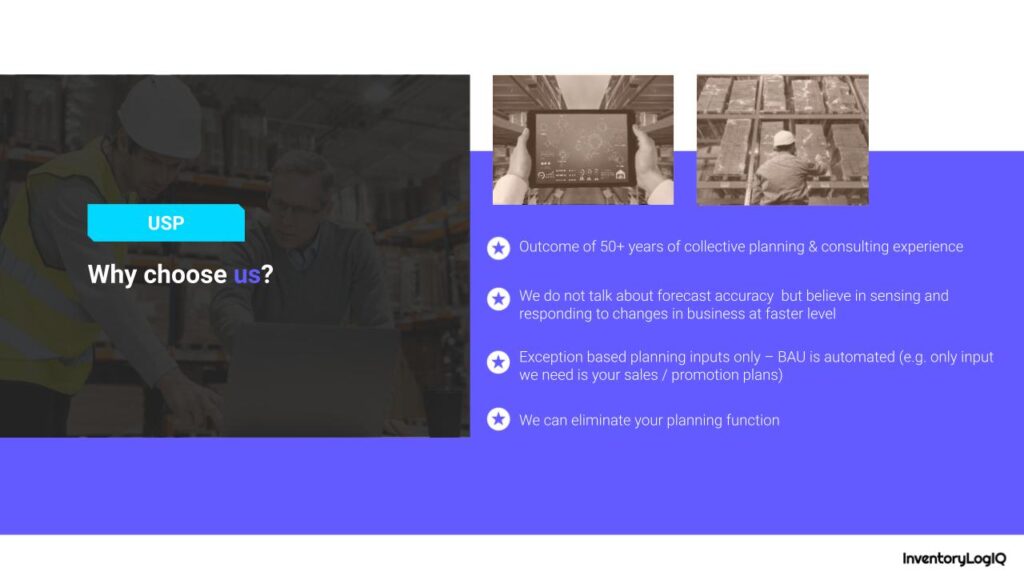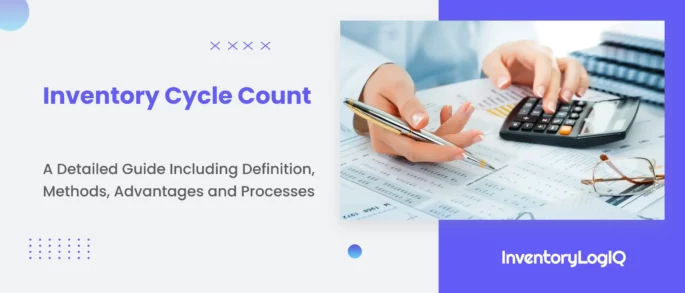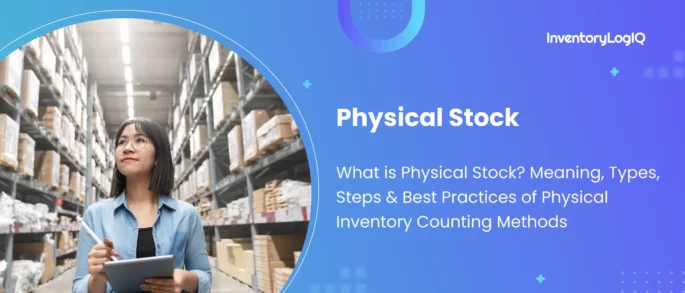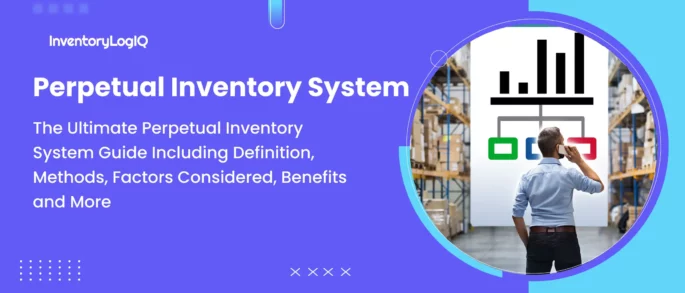What is Inventory Forecasting? Definition, Inventory Forecasting Methods, Tools Used, Benefits and Best Practices in 2023
Inventory forecasting is critical to the financial viability of your business, whether you run an eCommerce site or maintain a physical retail outlet. If you have insufficient merchandise on hand, you will lose sales. Excessive inventory on your racks means you’re tying up income that could be utilised to grow your firm in other ways.
So, how can you find a balance between maximising stock levels and controlling cash flow? Inventory forecasting may be a valuable tool to assist you with this task.
What is Inventory Forecasting?
Inventory forecasting anticipates consumer demand for a certain item of inventory over a specific period of time. To achieve the best inventory control, accurate inventory forecasting allows a corporation to maintain the optimum stock quantity without overstocking or understocking.
Forecasting inventory demand is frequently made using historical data patterns and an understanding of how market demand might change. A precise inventory prediction is vital, particularly in today’s scenario when supply chains and customer demand are continually shifting.
A combination of data analysis, industry expertise, and consumer insights is involved to successfully gauge demand and match it with the required quantity of inventory.
4 Inventory Forecasting Methods
Although instincts and experience can play a crucial part, the most efficient inventory forecasting methods are based on data and calculations. All inventory forecasting methods consider both rising and declining trends in consumer demand.
Profits are directly affected by the accuracy of the model you choose; therefore, it is essential to select an inventory forecasting method that will aid in proper inventory forecasting. There are several inventory forecasting methods to be considered that help in demand planning.
As each inventory forecasting method has a particular application or focus, they should be combined and matched to predict future outcomes.
The most common methods of inventory forecasting based on various formulas are as follows:
Trend Forecasting
A trend is a shift in product demand over a specified time. This approach anticipates prospective trends by using historical sales and growth data while removing seasonal impacts and discrepancies. More comprehensive sales data supports this inventory forecasting method by suggesting how certain customers and customer categories are expected to purchase in the future.
This data can assist analysts in developing new strategies for marketing and selling. It is a strategy for forecasting future sales trends based on previous sales or market growth data. The trend for a given product is identified and demand is forecasted based on the outcome. Trend data help you forecast future sales and adjust your inventory management strategy accordingly.
Graphical Forecasting
The same data forecasters analyse for trend forecasting may be plotted into a graph to highlight sales peaks and valleys. Some forecasters favor the graphical technique because of its visual character and available information. They may recognise patterns in data points and add sloping trend lines to graphs to investigate potential paths that might otherwise go unnoticed. The troughs and crests assist you in identifying prior inventory exploration, trends, and patterns, allowing you to forecast more effectively.
Qualitative Forecasting
When faced with a lack of historical data, several firms look to their consumers for important information. Focus groups and market research are two complex data collection strategies utilised in qualitative inventory forecasting. Forecasters then use this data to develop models. Qualitative forecasting is employed when historical data is no longer useful, relevant, or available.
Inventory forecasting based on current and future market economic demand is part of this technique. Inventory planners repeatedly run this prediction model using sales data, human intuition, market research, and panel consensus.
Quantitative Forecasting
Quantitative forecasting employs historical numerical data and is thought to be more accurate than qualitative research. The more data a corporation has, the more accurate the projection will be. Time-series forecasting is an example of quantitative forecasting since it employs periodic quantitative data to build a model that predicts future trends. This forecasting methodology is typically more accurate since it analyses historical sales data to estimate future demand. This strategy works well for established firms because it is based on prior sales data. It may be generated using data from the preceding quarter or year.
ABC Analysis is also useful when comes to inventory forecasting. You can read in detail here, ABC Analysis For Inventory Management
5 Best Practices for Inventory Forecasting in 2023
Involve Other Teams
It is not advisable to attempt inventory forecasting on your own. Your task will be made simpler if you work in a group. You’ll be able to manage your inventory with more precision and efficiency if you incorporate the help of operations, finance, marketing, product development, and other essential players.
Take Notes and Revisit Them for Future Planning
Future planning is critical for any business as it assists you in determining the number of items you require for your inventory. To effectively plan for the future, you should make notes and store present information. The prior year’s notes can simply be used to forecast your inventory for the current year.
You can also list holidays and special days when demand will be heavier than usual. Conversely, you can note down periods of low demand for accurate demand forecasting.
Utilise Available Data
To reorganize your inventory, you must first analyse its historical data. Data is critical for any small, medium, or large firm. However, your previous sales and inventory data should inform your future actions and aid you in being proactive. Your inventory forecasting method may then be repeated and employed for a consistent timeframe in the future.
View Real-Time Stock Levels
To correctly estimate future demand, you need real-time data. This real-time data can aid in inventory forecasting. Real-time data allows you to examine actual stocks at any moment and determine if your estimations were accurate or far off.
If they were inadequate, look into the underlying reason. Understanding why this occurred will allow you to learn from the past and modify your forecast.
Choose the Right Software
When you operate a business, you have a lot on your mind. The absence of good management might result in pandemonium. And amid this pandemonium, resolving inventory issues might be nothing short of a conundrum.
As a result, ensure that the system you’re utilising has all of the capabilities necessary to handle your company’s size and complexity. There are many inventory systems that are ideal for small to medium-sized organisations.
How Can You Perform Inventory Forecasting in 2023?
As a business expands, it becomes increasingly difficult to forecast inventory. Hence, businesses need tools to carry out inventory forecasting in an easy and hassle-free way.
Microsoft Excel
Basic spreadsheets might be useful in firms with only a few standard commodities. They may be used to load formulas, make assumptions, and do simple computations.
Although spreadsheets can be used as an inventory forecasting method, they are not very effective since they represent a static snapshot in time and are not linked to other tools or updated in real-time. Inventory forecasting should be extremely dynamic, bringing in data inputs from several sources for the most up-to-date information.
Statistical Modeling by 3PL Companies
Third-party logistics organizations, or 3PLs, frequently employ statistical modeling experts to fulfill the demands of developing enterprises. As your company expands and you start expanding the items in your inventory to satisfy demand, inventory planning becomes more complicated and necessary.
Many eCommerce firms outsource fulfillment to a 3PL provider, so they don’t have to construct the infrastructure, allocate resources and engage in the handling of inventory and logistics themselves.
Inventory Management Software
Inventory management systems incorporate forecasting capabilities if you manage order fulfillment yourself or if your 3PL does not supply the necessary software. This allows you to keep track of your inventory and units sold in real-time, run reports to determine which SKUs are your best sellers, and keep a pulse on how your business is doing.
When deciding on the best inventory management system for your business, look for platforms that include incorporated forecasting features. The most modern systems link with other aspects of your business through enterprise resource planning (ERP), so your inventory is handled from the same digital portal as your supply chain, customer relationship management, accounting, and other functions.
Inventory Forecasting Tools
Apart from 3PLs and inventory management software, solutions for inventory forecasting with distribution indicators, graphical representations, sophisticated analytics, and inventory reports on sales and stock metrics are available. This allows you to connect upstream purchasing and production operations to downstream sales and product demand.
Suggested Read: A Guide on Supply Chain Forecasting
What are the Benefits of Using Inventory Forecasting?
Inventory forecasting could make the difference between generating a profit and sitting on mounds of unutilised goods if you can anticipate it accurately. You may save money on storage, keep your customers happy and plan for prospective trends more effectively if you do this right.
A forecasting program requires a significant amount of initial effort, but it may pay dividends in several ways after you’ve acquired the essential data.
To begin with, you may save a lot of money. You can keep safety stock at a reasonable level if you can order the proper amount of merchandise at the right time. As a result, you’ll have less money for unsold goods. It helps reduce the quantity of out-of-stock goods displayed online to improve the user experience.
Easy Access to Information
Inventory forecasting helps you have easy access to relevant details of the quantity of stock, product types, etc. With inventory management and stock information, you can readily notice sales patterns and track recalled items or expiry dates.
Simple to Measure SKU velocity
You can obtain out-of-the-box reports, data visualisations, inventory summaries and adjust date ranges with a good inventory forecasting system. Some points that will help are:
- Examine how much you’ve sold throughout various periods.
- Calculate the number of days until an item will be out of stock.
- Save the reports by downloading them to a .csv file.
Summary of Inventory Levels
Inventory management provides a thorough perspective of inventory across all departments. This reduces duplication when updating inventory and the ability to buy in bulk will save your business money. When you combine inventory software with accounting and back-office operations, you will enjoy even more benefits.
You can avoid stockouts, which translate to lost sales revenue. Inventory forecasting prevents this by properly projecting future demand. Using this information, you may determine when to refill and how many units to order.
Discerns Your Location Distribution
Many growing businesses prioritise geographic distribution. Having inventory forecasting systems that answer the following questions assists companies in optimising inventory placement and shipment to reduce transit times and shipping costs. Some common questions you need to consider include:
- Where do my customers usually ship to?
- Which delivery options are the most popular with my customers?
- How long does it take for my orders to be delivered?
- Which states receive the most orders from me?
- How should my inventory be distributed over the fulfillment network?
- What would my shipping expenses be if I increased the number of fulfillment centers from one to two (or two to three, and so on)?
Suggested Read: What is Distributed Inventory?
Easily Integratable with Other Software
When deciding on the best inventory management system for your business, look for platforms that include incorporated forecasting features. The most modern systems link with other aspects of your business through enterprise resource planning (ERP), so your inventory is handled from the same digital portal as your supply chain, customer relationship management, accounting, and other functions. So it is essential to have a system that can be integrated with other systems for the efficient functioning of your business. Additionally, it should be integrated with eCommerce selling platforms to be able to sync and consolidate inventory levels across all of them.
Conclusion
Nothing is definite in life. However, uncertainty may provide a significant opportunity for those who are prepared. Forecasters do not deal with certainty. Instead, they seek undercurrents in the market that might lead to various conclusions so that they can plan appropriately. Forecasts are based on facts and reasoning, and models built from historical performance and other criteria are modified over time, typically using advanced technology. Inventory forecasting may help your business succeed by ensuring that you have the proper merchandise to fulfill client demand while not tying up cash in unnecessary inventory. If you require assistance with inventory forecasting and any other eCommerce-related processes, you can check out Inventory LogIQ.

InventoryLogIQ is a smart warehouse and inventory planning & optimisation solution that assists in inventory forecasting, and inventory management across multiple platforms and warehouses. It is a plug-and-play software that can integrate easily with WareIQ‘s WMS, 3rd party, or Merchant’s own WMS.





